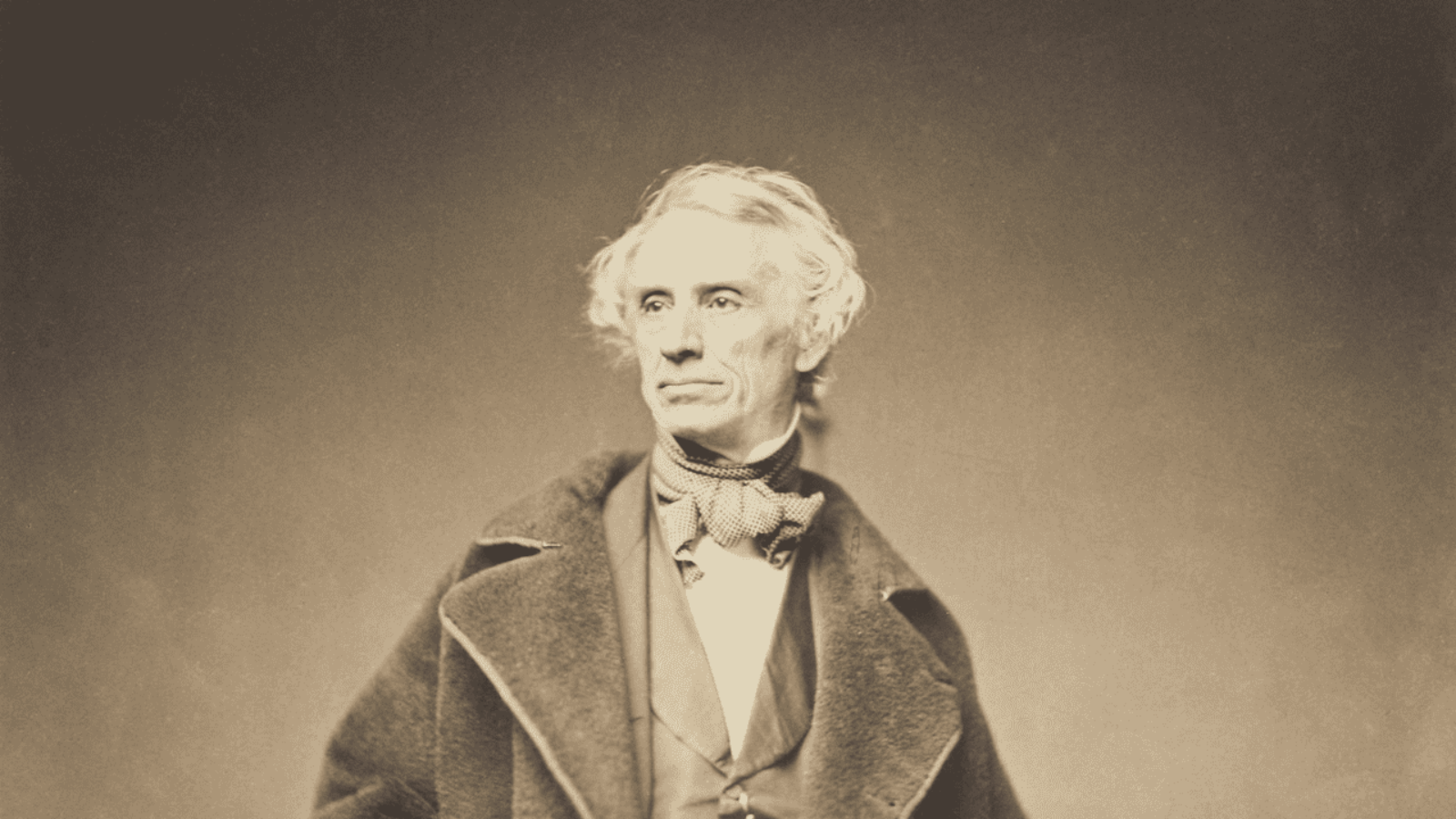May 24, 1844: Samuel F.B. Morse sent the first telegraphic message over an experimental line from Washington, D.C., to Baltimore. The message “What Hath God Wrought?” was taken from the Bible as suggested by a young girl named Annie Ellsworth, the daughter of Morse’s close friend.
What Hath God Wrought?
On May 24, 1844, Samuel F. B. Morse dispatched the first telegraphic message over an experimental line from Washington, D.C., to Baltimore. The message, taken from the Bible, Numbers 23:23 and recorded on a paper tape, had been suggested to Morse by Annie Ellsworth, the young daughter of a friend.
Morse is best known as the inventor of the telegraph, but he is also esteemed for his contributions to American portraiture. His painting is characterized by delicate technique and vigorous honesty and insight into the character of his subjects.
While returning from Europe to assume a position as an arts professor at New York University, Morse began to conceive of a communications system employing the electro-magnet and a series of relays through a network of telegraph stations. In order to transmit messages via this system, he invented Morse Code, an alphabet of electronic dashes and dots used to transmit telegraph messages.
In an interview in the digital collection American Life Histories: Manuscripts from the Federal Writers’ Project, 1936 to 1940, Ross M. Plummer talks of his father’s fascination with possibilities introduced by Morse’s invention:
At about the time my father was a young practicing physician in Missouri, Samuel Morse’s electric telegraph was becoming an increasingly useful and important new development. A net work of lines was being extended in all directions…. The miracle of electricity as applied to the clacking telegraph key and sounder, so absorbed my father that he … knew that he could never be fully satisfied until he had, for awhile at least, devoted his entire time to the telegraph…. It wasn’t long until my father was known throughout Missouri as an expert and soon his services were in demand. When the Western Union Telegraph Company thrust their history-making first transcontinental wire through the Rockies, my father was on the payroll as an installation engineer and operator.
“Occupational and Medical Lore.” Ross M. Plummer, interviewee; A. C. Sherbert, interviewer; Portland, Oregon, January 19, 1939. American Life Histories: Manuscripts from the Federal Writers’ Project, 1936 to 1940. Manuscript Division
Western Union’s completion of the first transcontinental telegraph line in October 1861 doomed the Pony Express. At the same time, as the Civil War demonstrated, it made electronic telecommunication indispensable.
As the Civil War progressed, mobile telegraph stations and hastily strung wires began to connect scattered military units. During the Seven Days’ Battles, June 25-July 1, 1862, General George McClellan sent frequent dispatches to the War Department telegraph office, where President Lincoln often appeared to seek news from the front. The telegraph contributed to the failure of a Confederate attack against the Federal General Ambrose Burnside when an assault force under General James Longstreet got tangled in Union telegraph wires strung from tree stump to tree stump at Fort Sanders in Knoxville, Tennessee.
Learn More
- Examine the Samuel F. B. Morse Papers at the Library of Congress, 1793 to 1919, which comprises about 6,500 items—correspondence, diaries, drawings, and other material. This collection includes, for example, a Prospectus for the European and American Submarine Telegraph Company. In 1844 Morse, who recognized the power telecommunications might hold in shaping public opinion, wrote, “be especially careful not to give a partisan character to any information you may transmit.”
- Search on telegraph in the Civil War photographs collection for more photos related to the telegraph during the Civil War. To see a wider variety of related images search on the term communication.
- Search on the term telegram in the Abraham Lincoln Papers at the Library of Congress to understand more about the importance of the telegraph to the Lincoln administration. Read, for example, a telegram to Lincoln concerning the execution of spies in Baltimore.
- The Detroit Publishing Company collection includes photographs of Morse’s portraits of Mr. David C. De Forest and Mrs. David C. De Forest.
- Search on telegraph in American Life Histories: Manuscripts from the Federal Writers’ Project, 1936 to 1940 to find more recollections.
- Learn about the work of another American father of telecommunications. See the Alexander Graham Bell Family Papers at the Library of Congress.
- Read about Emile Berliner: Inventor of the Gramophone in the collection Emile Berliner and the Birth of the Recording Industry. Among the sound recordings in this collection is an address written and delivered by Berliner in Atlantic City, July 7, 1908.
